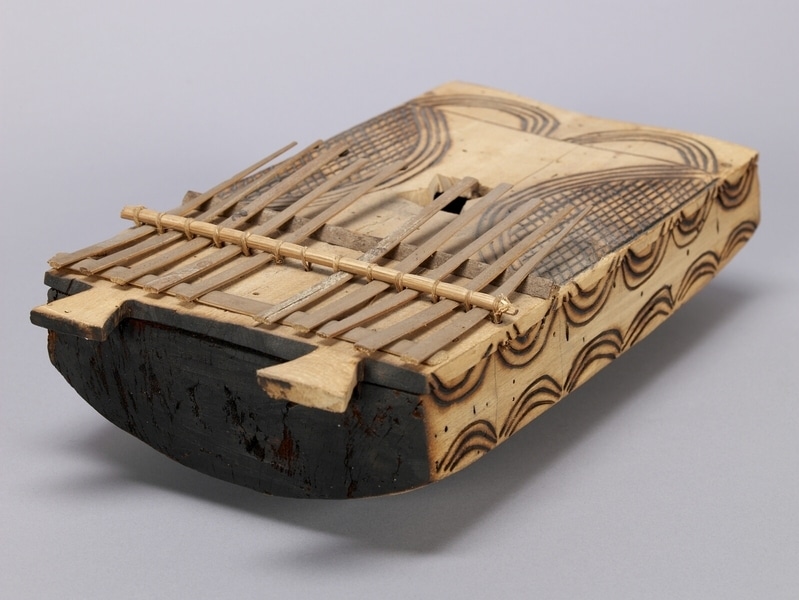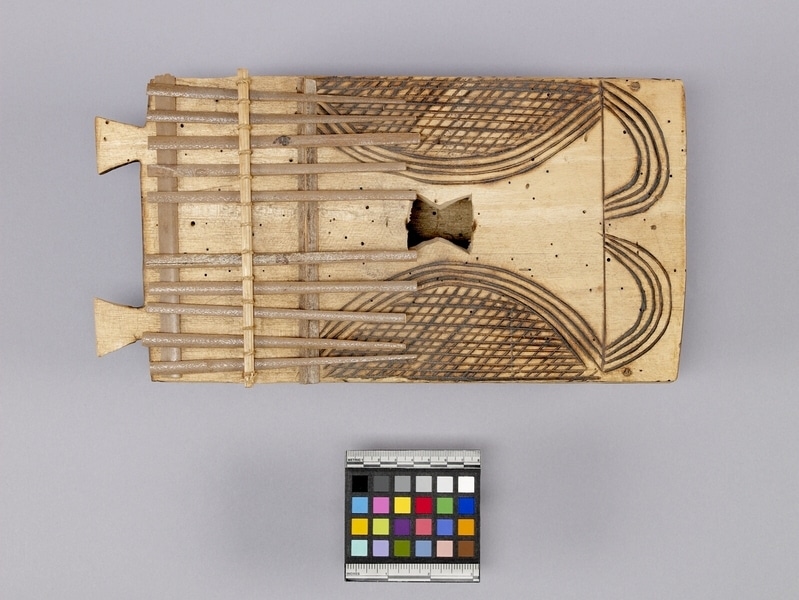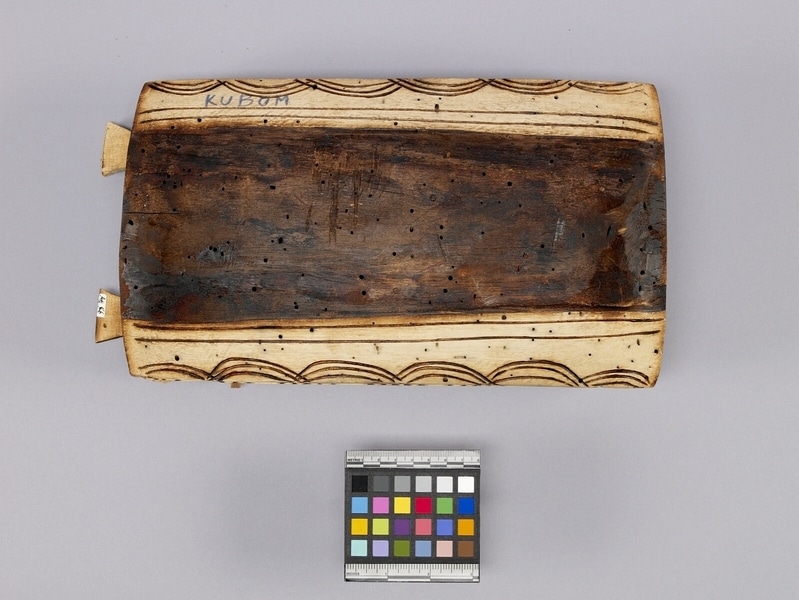Thumb Piano Item Number: Ae46 from the MOA: University of British Columbia



Description
Light tan-coloured musical instrument covered with curvilinear designs burnt onto the surface and blackened ends. Hollow body with a flat top and rounded bottom; ten keys are made from stiff strips of wood attached to the top of the body; two protrusions at one end of body. The word "Kubom" inscribed in blue ink along one side.
History Of Use
The thumb piano (commonly known as sanza or mbira) is a plucked idiophone (or lamellaphone) that has been in use for thousands of years, and is played widely throughout the African continent. It is known by many different names, e.g., kilembe, likembe, kadono, akogo, timbrh, and thumb piano and has undergone regional variations, but the general style and function remain consistent. The instrument has been played for both secular and ceremonial use, e.g., around the fire during social evenings, or to commicate with the ancestors.
Item History
- Made in Cameroon
- Collected before 1980
- Owned by E. M. Von Kaldenberg before July 28, 1980
- Received from Museum of Anthropology Shop Volunteers (Funding source) and E. M. Von Kaldenberg (Seller) on July 28, 1980
What
- Name
- Thumb Piano
- Identification Number
- Ae46
- Type of Item
- thumb piano
- Material
- wood, plant fibre ? and adhesive ?
- Overall
- height 9.5 cm, width 18.0 cm, depth 34.5 cm
Who
- Culture
- Central African
- Previous Owner
- E. M. Von Kaldenberg
- Received from
- Museum of Anthropology Shop Volunteers (Funding source) and E. M. Von Kaldenberg (Seller)
Where
- Holding Institution
- MOA: University of British Columbia
- Made in
- Cameroon
When
- Collection Date
- before 1980
- Ownership Date
- before July 28, 1980
- Acquisition Date
- on July 28, 1980
Other
- Condition
- fair
- Accession Number
- 0640/0008